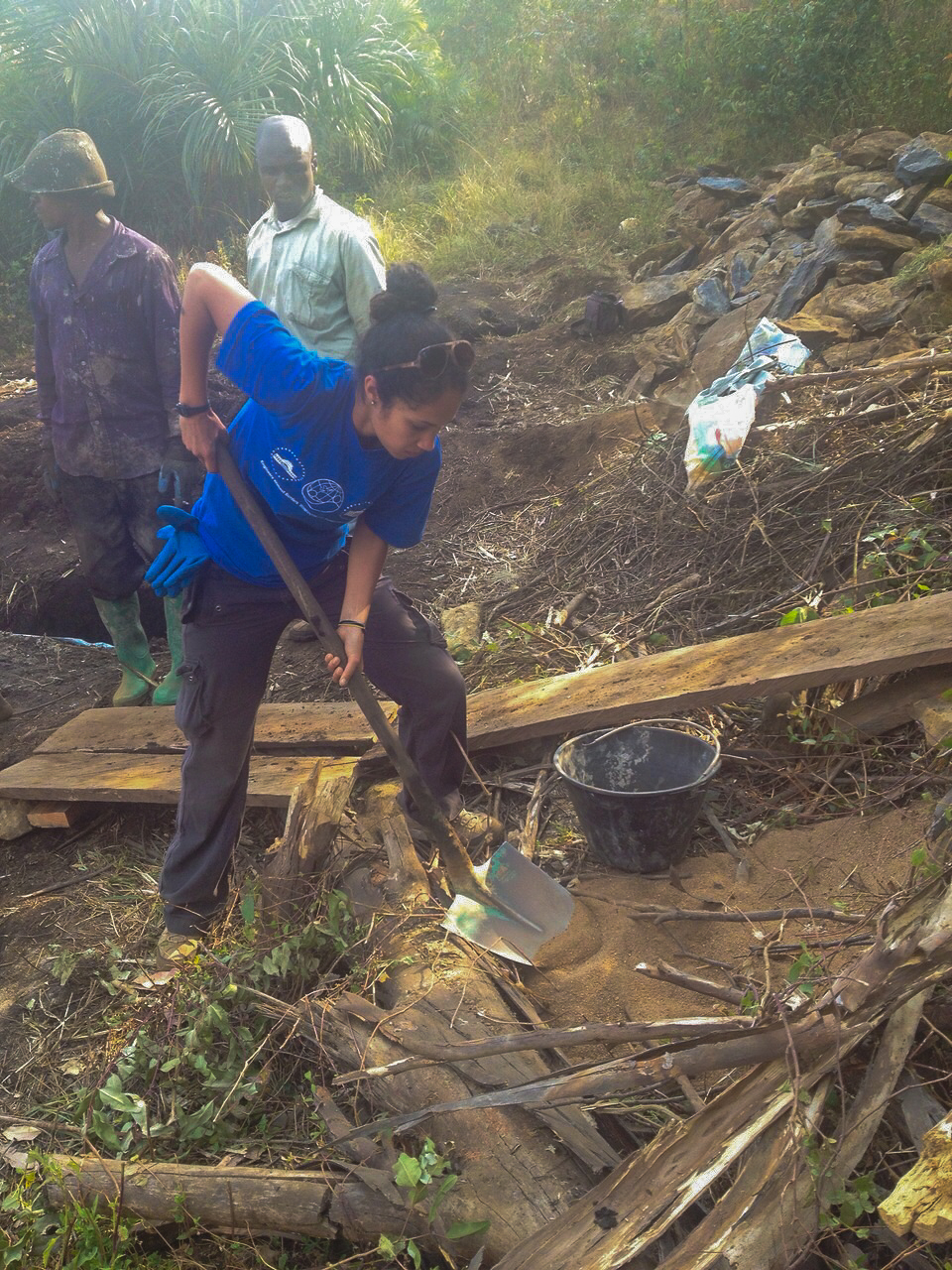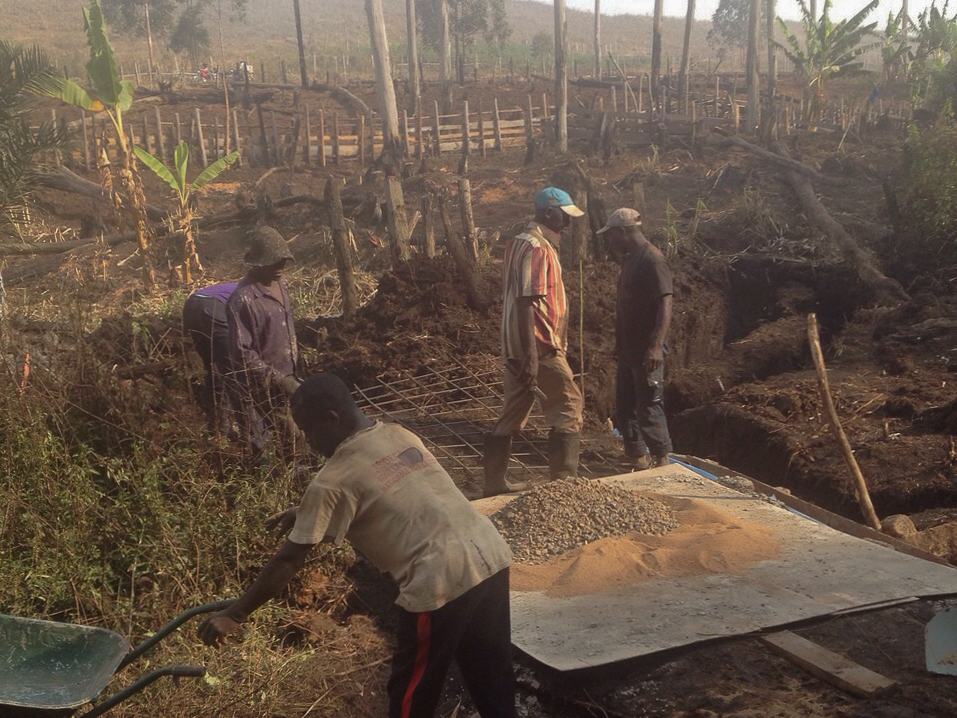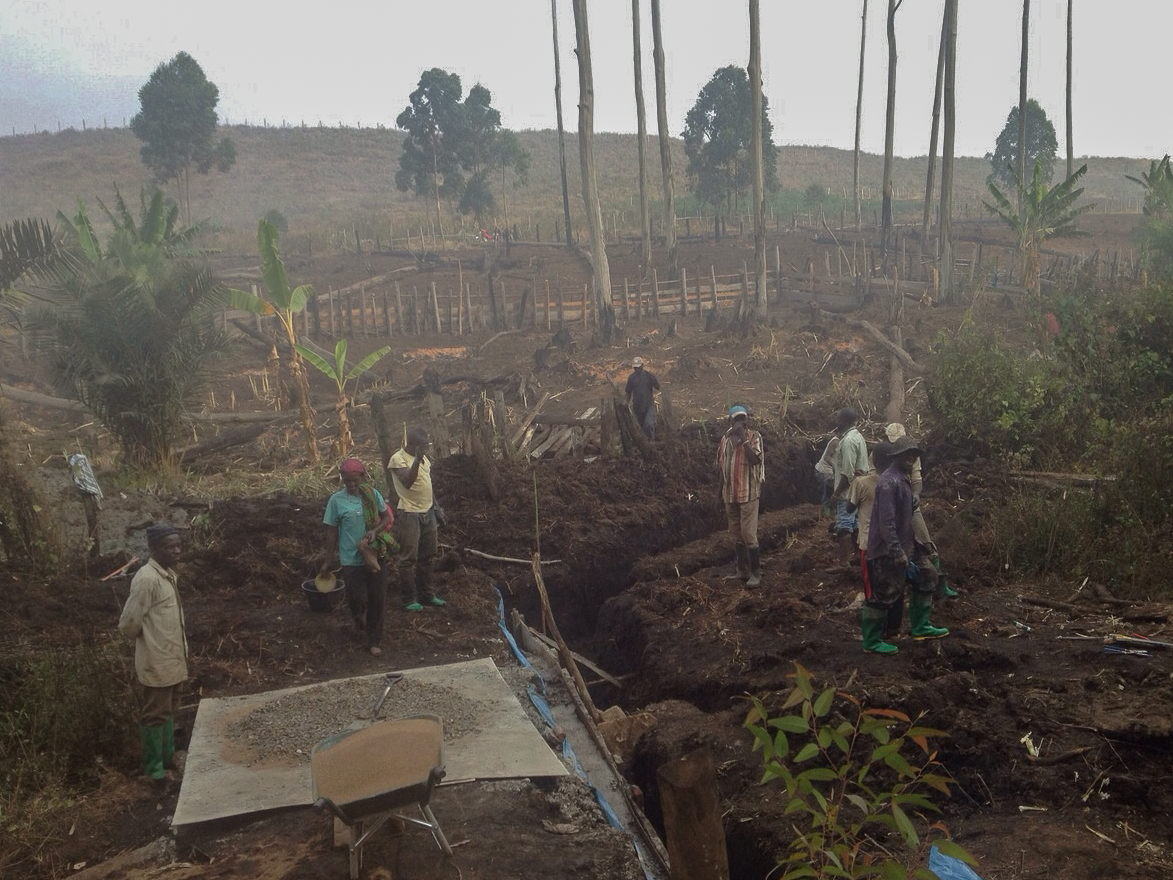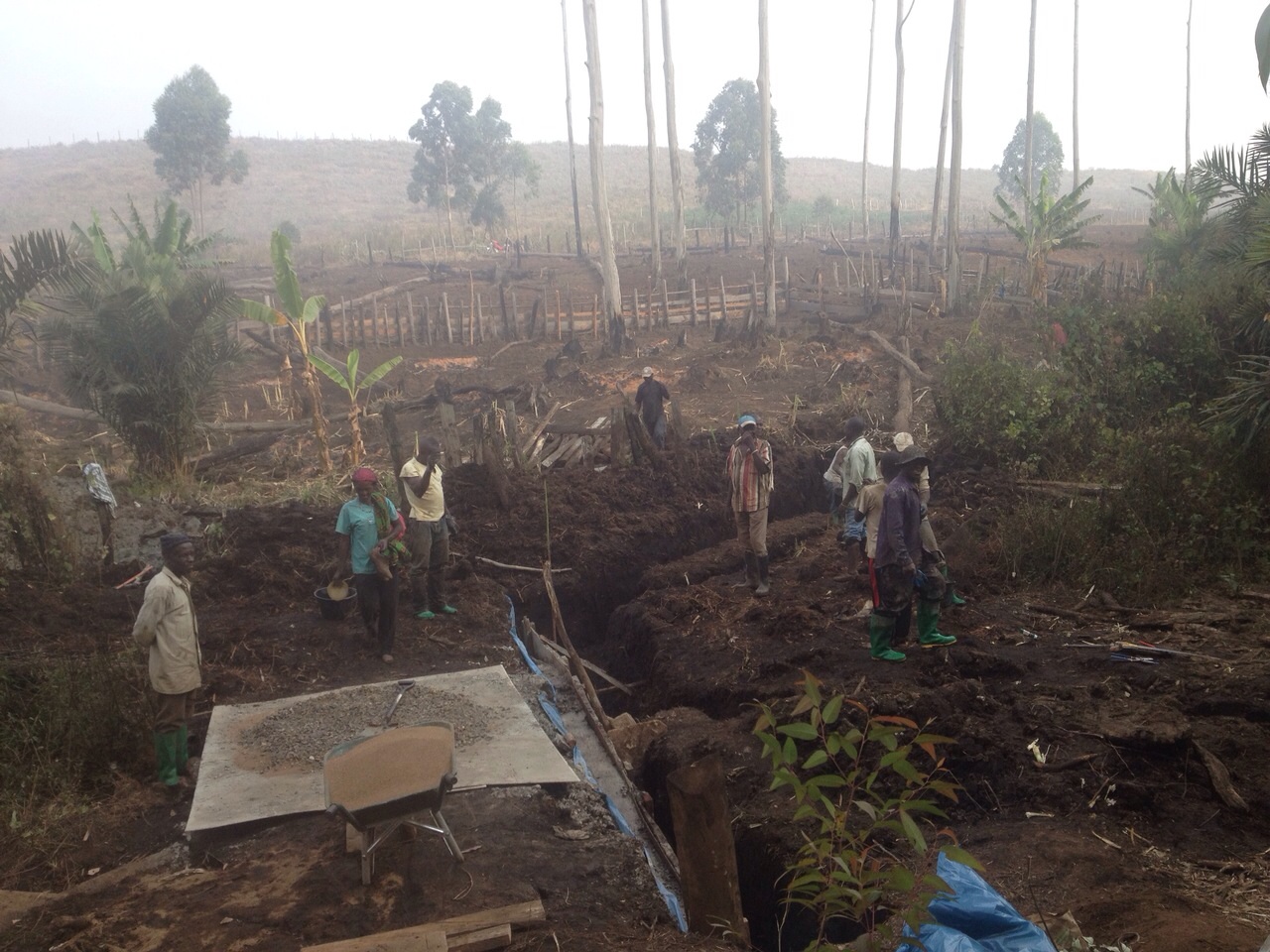Getting their Hands Dirty
We’ve received our first photos from Mbokop since the team arrived and, as you can see, they have been having a lot of fun playing in the dirt! The construction work taking place is at the high point in the water system, where an underground spring source will be captured and collected into a stone and concrete box (called a “spring box”) which then will feed the water supply pipeline. To learn more about spring boxes and spring box design, check out this Water for the World Resource. On the right, Ashley (project co-lead) is shown shoveling sand, one of the key ingredients in the concrete mix for the spring box.

The area that drains to and surrounds the spring source, is called the “catchment area.” The photo below provides a good view of the spring catchment area for Mangi. In addition to collecting the spring underground, the project includes extensive catchment area protection efforts. Catchment protection includes precautionary actions, procedures, or installations undertaken to prevent or reduce harm to the environmental integrity of drainage areas used to catch water. It is an important component to any water system design because simple steps taken to fence off a water catchment area minimizes contamination from animals and other sources. This improves overall water quality and reduces or eliminates the need for water treatment at the source.
The catchment protection system designed for Mangi includes the following components: fire barrier; drainage ditch; dead fence; live fence (think pricker bushes), and vegetation within the catchment (which, among other things, helps hold the soil in place). To learn more about Catchment Area Protection, check out this handbook.

And a Chicken in Tow?
The kindness and generosity of the community members in Mbokop has always been one of the things our team members reflect on fondly. In addition to housing and helping to cook and clean for the team, many community members also contribute all sorts of great food from their farms, gardens, and trees. On this trip, the team has reported enjoying A LOT of papayas! Some highlights from past trips have included avocados (called “pear” in Mbokop), amazing variety of bananas, pumpkin, and peanuts. Yesterday, our team also received a special gift on their way up to the catchment area…
The team was walking from the house where they are staying to the site of the catchment area. On the way to the catchment, the team stopped to meet with the Mbororo tribe. The Mbororo gave them a live chicken, which was a very generous contribution to feeding our team and construction crew. Because they were already on their way to the catchment area (a long uphill hike, which one doesn’t want to do any more times than is necessary in a day), the team had to continue walking and bring the chicken to the catchment with them for the day. Ashley reports that the chicken was “well behaved.” We are all really looking forward to the pictures of them walking through the community with the chicken in tow!

